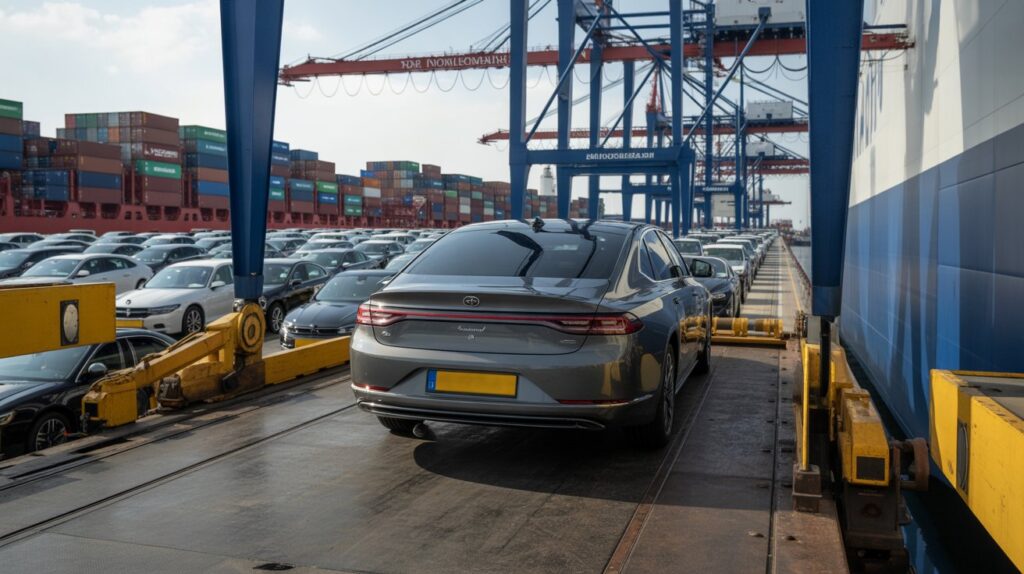Importing a vehicle across continents can seem complex, yet it becomes manageable when the steps are clear. Many collectors and car lovers choose to import car from Netherlands to US for its engineering quality and value. This guide explains how to make the process efficient and compliant with all requirements.
Understanding the Import Process
The first step to import car from Netherlands to the US involves understanding how both countries regulate international transport. The US follows strict standards through the Environmental Protection Agency and the Department of Transportation. These agencies verify that every car entering the country meets emission and safety guidelines.
In the Netherlands, exporters handle official paperwork such as de-registration, export license plates, and shipping documentation. A certified export agent can simplify this part of the process by preparing the bill of lading, proof of ownership, and customs declaration. The US Customs and Border Protection office then checks all documentation once the car arrives.
Preparing the Car Before Shipping
Before you import car from Netherlands to the US, the vehicle should be inspected to confirm it meets American standards. This step prevents delays or costly modifications once the car reaches a US port. Have a mechanic check for proper headlight alignment, emission control systems, and safety restraints.
The car must also be cleaned thoroughly to remove soil and plant material that could violate US agricultural regulations. The battery should be disconnected, and fuel levels kept low for safety during transit. Taking photos and recording the car’s condition protects against potential damage disputes later.
Choosing the Right Shipping Method
Two primary shipping methods are available for those who import car from Netherlands to the US. The first is container shipping, which places the car inside a sealed container for maximum protection. It suits high-value or classic cars. The second method is roll-on roll-off shipping, where the car is driven onto a vessel and secured on deck. This option costs less and works well for regular vehicles.
When comparing prices, consider transit time and insurance coverage. Most ocean carriers offer tracking, but full insurance gives extra peace of mind. Reputable shippers provide a detailed contract outlining responsibilities, pickup schedules, and estimated delivery windows.
Customs Clearance and Import Duties
Once the car arrives in the US, customs clearance begins. To import car from Netherlands to the US, the importer must file several forms including the EPA Form 3520-1 and the DOT Form HS-7. Customs officers will inspect the paperwork to confirm compliance with federal standards.
Import duties depend on the vehicle type and value. Passenger cars typically face a 2.5% duty rate, while trucks and motorcycles have different rates. Proof of purchase and shipping invoices determine the total duty payable. Some vintage vehicles may qualify for exemptions, but that depends on their age and historical classification.
Registering the Vehicle in the United States
After customs approval, the next step to import car from Netherlands to the US is registration. Each state has its own Department of Motor Vehicles process, which may include emissions testing and safety inspections. You’ll need the original foreign title, customs clearance forms, and proof of ownership to complete the process.
Once registered, the car can legally operate on American roads. Many importers prefer to hire a compliance specialist who converts European lighting or emissions systems to meet US standards. This extra service shortens the timeline between arrival and road readiness.
Common Mistakes to Avoid
People who import car from Netherlands to the US sometimes overlook critical details that cause expensive setbacks. Missing documents, incorrect VIN numbers, or unpaid customs fees can hold up clearance. Ignoring insurance options can also result in losses if damage occurs during transit.
Another common issue is buying a car that does not meet US standards. Some European models require costly conversions, so checking compatibility before purchase saves money. Always work with licensed import agents who understand both Dutch and American laws.
Why Many Choose to Import from the Netherlands
The Netherlands has a strong reputation for maintaining high vehicle standards and transparent sales documentation. Cars from Dutch sellers often come with full maintenance records, which helps with US registration approval. Those who import car from Netherlands to the US find that the process, while detailed, is worthwhile for quality and authenticity.
Buyers seeking classic or limited models often locate them in Dutch markets, where availability can be higher than in other European countries. The process takes planning but results in ownership of a well-kept and often rare automobile.
When handled correctly, the decision to import car from Netherlands to the US rewards the effort. The process requires planning, accurate paperwork, and attention to legal standards. Once complete, you can enjoy a reliable European vehicle that stands out on American roads.





